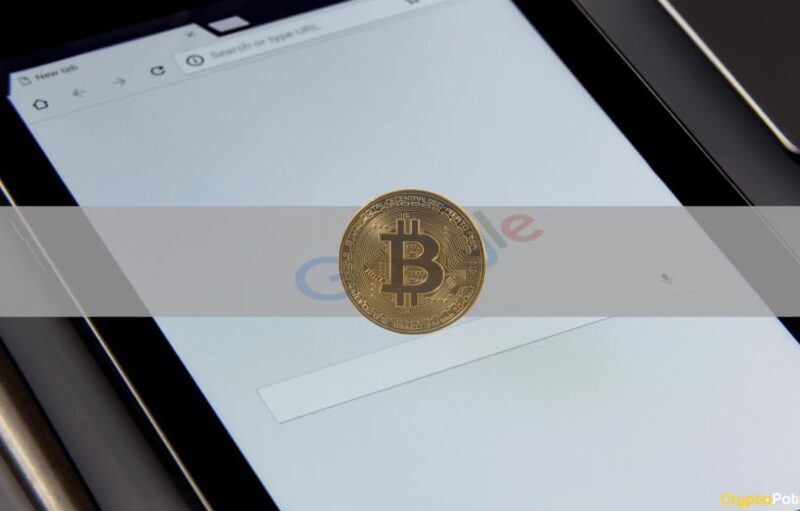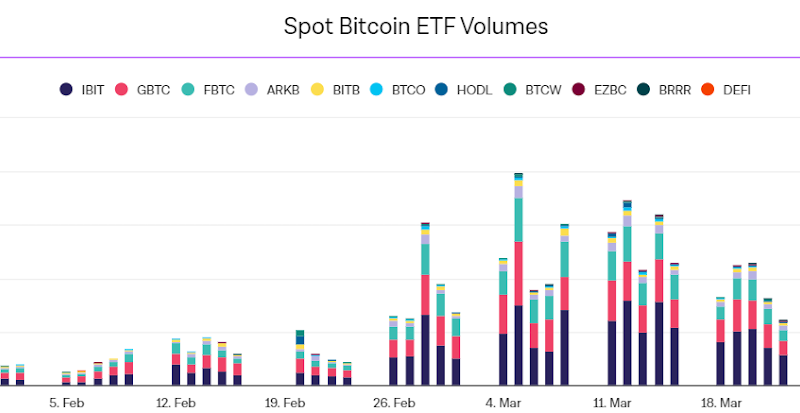
The economist Albert Alchain once said “economics does not care whether people are rational, but whether people can survive.”
This statement certainly hits home. After ten years of rapid growth in the digital currency market, the impression most people have is that it’s all just hype, a bubble, or too risky. While everyone has their own view, the goal is not to define what the current market should be, but what it actually is.
Review of Digital Currency Market Investment in the Past Decade
Bitcoin Investment Logic Since 2008
Since 2008, there have been numerous articles discussing the logic behind Bitcoin investment. There are three main points to consider:
- Monetary Perspective: From the collapse of the Bretton Woods System and the criticisms of Keynesianism, to the praising of Bitcoin’s ingenious design of its deflation mechanism, and Hayek’s view of the “denationalization of money” as a theoretical pillar of Bitcoin as a mainstream currency.
- Mechanism Design Perspective: Bitcoin is created fairly from the process of “mining.” Transactions do not require third-party verification, and records are permanently stored in a public ledger, which cannot be changed or altered.
- Network Effects Perspective: The simple and straightforward incentive system of Bitcoin enables large-scale expansion of its network effects. The global, well-known venture capital company A16Z, is a supporter of the network effect.
Ethereum’s Influence on the 2017 Bull Market
In 2017, the principles of Ethereum and smart contracts triggered a bull market. The analysis of the reasons for this movement, however, is obviously not sufficient in analyzing the value of Bitcoin investment. This is largely due to the fact that digital currency believers tend to recognize Bitcoin as an “asset,” while other digital currencies can only be referred to as “investments.”
We can simply explain that the “assets” here refer to “investment goods that you are willing to hold for a long time, while believing that you can gain continuous economic returns.” On the other hand, “investments” refer to “investments with value being more reflected in short-term gains.”
The market in 2017 can be described as follows:
- Blockchain technology officially entered the general consciousness.
- ICOs enabled retail investors to invest in blockchain technology and other related projects.
- The expansion of DAOs (decentralized autonomous organization) permeated the space.
[DAO is a concept proposed by Ethereum. The incentive model is similar to the traditional option incentive, but more flexible and fair. Its management model relies on smart contracts, rather than centralised authorities.]
Driven by both price and the ideal opportunity, some investors choose to invest in Ethereum or other smart contract projects. In addition to reaping excess returns, they also maintained a sense of loyalty similar to religion. Die-hard developers and devoted investors alike participated in their favourite projects and improved them.
During the bull market of 2017-2018, top research institutions and acclaimed researchers in China (and elsewhere) set up teams to develop public chains with higher performance requiring large-scale financing. Harmony, Algorand, Oasis Labs, Blockstack, and Nervos were star projects of these efforts. However, in 2019, they have not performed well, and the market seems to have lost enthusiasm for these projects.
The Boom of Exchange Currency in 2019
During the bull-bear transition, investors who were hurt by the market crash finally realized that “public chains are useless.” So, many high-performance public chains were developed, but these technical advantages could not be relied upon to build a stable ecology.
The DAO model we so believe in seems to be out of reach.
The concept of “exchange currency” is the only useful label for real-world investing. Income from the exchange is used to buy back tokens and issue dividends to investors. Simultaneously, the tokens possess advantages aside from equity — it bears the function of a currency and can be used for transaction fees, etc. This idea makes most people feel extremely at ease because, although a token is not a currency, it is used in such a similar manner and is perfectly designed for the token economy mechanism.
For a detailed explanation of the investment logic behind the currency of exchanges, please refer to previous articles by X-Order: “Currency Revolution: Combining Commodities, Securities, and Currency in One: “Super Carrier” Binance Cryptocurrency (BNB)”.
Currently, the market has returned to the most basic business logic – the pursuit of cash flow. Investors are no longer led merely by belief in the validity of a project: no matter what type of digital currency, it is by nature an entrepreneurial project. The only concern, then, becomes the ability for the investor to make money. Consequently, if gains are realized, then investors prove that they have the capability to pull up the market.
Has Bitcoin Investment Logic Been Proven?
The answer is definitely yes. Whether we look at early Bitcoin investors who simply had a hunch, or the general Bitcoin investment logic after its explosive growth, most investors have a consensus on the reasons for investing in Bitcoin.
However, the market value of Bitcoin is still similar to a large listed Internet company, without any signs of further incoming investment.
In fact, Bitcoin needs a suitable social environment as a catalyst to further expand public consensus.
Is the Concept of a DAO a Fantasy?
The bull market brought by the Ethereum network was short-lived. Therefore, the possibilities of DAOs were never fully realized. This makes us wonder: is the idea of a DAO an impossibility?
First of all, it is unclear if it is possible for Ethereum or a public chain to naturally expand its network. However, it is contradictory to economic principles if we want to enable a public chain to be like a DAO – autonomously controlling itself and expanding.
In the market, “scarcity” is an objective fact. When facing scarcity of high-quality resources, people will have to make a choice. Among many public chains, people will naturally choose the most ecologically perfect public chain to develop and make contributions.
Although a DAO is decentralized, a clear goal of such projects is still necessary. Due to the lack of clarity in the actual value of the public chain, it is difficult for the whole system to be efficiently autonomous. However, this does not mean that the concept of a DAO cannot be applied to other blockchain projects.
Is the Cryptocurrency Industry’s Pursuit of Cashflow a Form of Evolution?
For the project teams, the fact that investors start to consider cash flow means that they look at more aspects when assessing the project, which will improve the project’s quality as a whole. However, we cannot say that it is evolutionary when investors merely pursue cash flow, because this tends to limit our thinking.
Common Investment Themes
- The economic cycle is a catalyst of market development. Every investment theme is more or less affected by the environment beyond the economic cycle. We have systematically explained the impact of the cycle on the industry and market in our “An Observation of Crypto Cycles” series.
- All investment themes have network effects. The article “Hidden Networks: Network Effects That Don’t Look Like Network Effects” by A16z separates “hidden network effects” into slow network, unfinished network, limited network, potential network, and other forms. This is more convenient for us to discuss deeply about the existence of “hidden network” characteristics when observing the investment themes that have not “erupted.”
Once the investment theme breaks out, good investment products will emerge, bringing investors excess returns. At the same time, the industry chain formed around investment products can expand its wealth effect.
This is the case with Bitcoin. The upstream industries (mining machines, mining pools, mines, etc.), and the middle and downstream industries (exchange, custody, lending and other financial services) around Bitcoin are all thriving and losing alongside Bitcoin. This is unique in the whole of the cryptocurrency market.
Ethereum also tried to establish such an industrial chain from the perspective of its functions, such as expansion solutions, middleware, DApp and other projects around it — many of which have also obtained large-scale investment in recent years. At present, Ethereum has established the largest ecology in the field of public chains, but that has not helped increase its value.
The Digital Currency Industry In the Future
One trend we can observe is that the digital currency industry is no longer only developing around the concept of the “blockchain.”
There have been an increasing number of traditional companies issuing digital currency, and start-ups acquiring financing in the form of digital currency. Based on the notion that “a digital currency project is effectively an entrepreneurial project,” the industry attracts start-ups, and these startups establish goals in order to make the industry better in the future.
What Characteristics of the Digital Currency Industry Attract Entrepreneurs?
- The industry itself is in the early stages of development and therefore has huge entrepreneurial potential. Good investment products are always able to form an industrial chain which drives the development of upstream and downstream industries. Since we are only at the beginning developmental stages of the industry, many entrepreneurs are keen to find the next “Bitcoin” and “Ethereum,” and then develop around it. If we can find a good next target, the competition in the upstream and downstream industries is relatively small. There are currently many teams developing around the industrial chain of Polkadot and Cosmos, for example.
- Having flexible financing and exit strategies would make the project more favorable. In the field of traditional investment, investors tend to consider more objective and practical factors when selecting projects. Furthermore, the qualification requirements for projects are also often higher. Previously, “going public” actually meant the end for investment institutions.
However, a token economy is more flexible. It gives the project more opportunities, such as capital, influence, recognition and so on. Going public on the exchange is no longer the end. As we all know, there are various long and short mechanisms and financial derivatives in the digital currency market. This makes the ‘survival of the fittest’ strategy more flexible.
The market is a two-way selection process, so the best projects are not the only projects eligible for recognition. This is just the initial stage. The market will eventually give us the answer as to whether or not a project is valuable.
What Is the Mission of a Particular Project in Order to Accelerate Industry Development?
- The Example of Mine Sweep
The CEO and CTO of Zilliqa both left the project, while a famous researcher at Loom has also been suspected of leaving. These two established digital currency projects participated in the bull market in 2017 and enjoyed healthy profits. Furthermore, they have always been the leaders in the industry’s technological development. When people at the forefront of the industry begin to give up, it points to possible instability in the ecosystem.
It’s possible that they gave up because these projects were unable to find a breakthrough. But perhaps the industry needs an increasing number of projects like Mine Sweep in order to push developers to find such breakthroughs. Development and iteration paves the way for innovation.
- Finding Balance Between Markets and Business
In the digital currency industry, the market is always one of the most useful channels to help projects quickly build up influence. Since the project has enjoyed the benefits of financing and exit flexibility brought about by the market, it should also bear some of the corresponding responsibilities.
The following is an example of the current process for a project to be listed on an exchange:
- An ordinary project raises approximately $700,000 through fundraising and is ready to go on the exchange.
- The exchange will charge $150,000 to list the project; it will also charge approximately $300,000 in margin fees. Once the project has been listed, the secondary market will be open for trading;
- In a depressed market environment, early investors recognize the disparity and withdraw as soon as the project has been successfully financed. Eventually, the secondary market is left only with depressed currency prices.
The convenience of currency issuance results in the motivation and timing of the project issuance to become key points of consideration.
Instead of thinking about how to list on an exchange and rely on supporting prices actively, project teams should think about how to turn these traders into a part of their own network.
- Bringing New Inspiration to the Industry
Start-up projects need to bring innovation to the industry.
The industry needs more disruptors, not followers.
For example, staking is currently a popular trend. But what is the point if every project does staking? Whether it is a small improvement to the blockchain infrastructure, or making improvements to a traditional business model integrated within a token economy, each project should have its own characteristics and advantages, bringing new inspiration to the industry.
Conclusion
Finally, the future is full of uncertainty — the next outbreak of the digital currency market may be due to the development of blockchain technology, or the redistribution of the means of production caused by war and turmoil. No one can be sure. At present, an increasing number of different companies (sharing economy, social entertainment, artificial intelligence, etc.) are trying to participate in the social experiment of this transformation.
Written by Carey Cai and Edited by Daphne Tan. X-Order is an investment and research organization dedicated to the study of value capture in open finance founded by Tony Tao.
The post appeared first on CryptoBriefing






